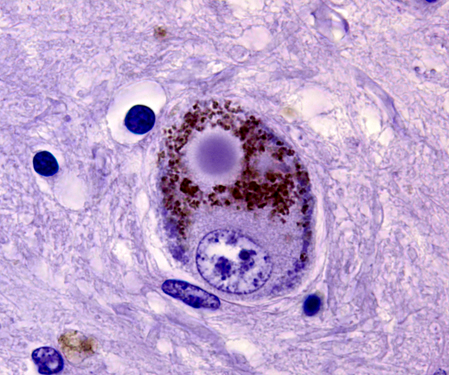Parkinson’s Culprit Could be Parkinson’s Salvation
Although Parkinson’s disease is generally characterized by muscle tremors, that is not always the case. The disease is a nervous system disorder that progresses over time. It affects the muscles and movement.
According to the Mayo Clinic:
Parkinson’s signs and symptoms may include:
- Tremor. A tremor, or shaking, usually begins in a limb, often your hand or fingers. You may rub your thumb and forefinger back-and-forth, known as a pill-rolling tremor. Your hand may tremor when it’s at rest.
- Slowed movement (bradykinesia). Over time, Parkinson’s disease may slow your movement, making simple tasks difficult and time-consuming. Your steps may become shorter when you walk. It may be difficult to get out of a chair. You may drag your feet as you try to walk.
- Rigid muscles. Muscle stiffness may occur in any part of your body. The stiff muscles can be painful and limit your range of motion.
- Impaired posture and balance. Your posture may become stooped, or you may have balance problems as a result of Parkinson’s disease.
- Loss of automatic movements. You may have a decreased ability to perform unconscious movements, including blinking, smiling or swinging your arms when you walk.
- Speech changes. You may speak softly, quickly, slur or hesitate before talking. Your speech may be more of a monotone rather than with the usual inflections.
- Writing changes. It may become hard to write, and your writing may appear small.
The cause of Parkinson’s disease has been tied to the gradual break down or death of brain neurons. The death of the neurons results in a decrease of dopamine, an important chemical for normal brain function. As the levels of dopamine steadily decrease, it results in abnormal brain function which results in the onset of Parkinson’s disease.
A number of researchers have linked the formation of what they call Lewy bodies to the onset of Parkinson’s disease and some forms of dementia. Lewy bodies are defined as:
Clumps of specific substances within brain cells are microscopic markers of Parkinson’s disease. These are called Lewy bodies, and researchers believe these Lewy bodies hold an important clue to the cause of Parkinson’s disease.
The Lewy bodies contain a number of different substances including a protein called alpha-synuclein. The presence of alpha-synuclein in the Lewy bodies has been suspected of playing a key role in the development of Parkinson’s disease and a recent study has revealed that not only does it play a key role, but may lead to a treatment of Parkinson’s disease:
A small protein previously associated with cell dysfunction and death in fact serves a critical function in repairing breaks in DNA, according to new research led by scientists at Oregon Health & Science University…
The findings suggest that it may be possible to design new therapies to replace alpha-synuclein’s function or boost it in people with Parkinson’s disease and other neurodegenerative disorders.
Aggregates of alpha-synuclein, known as Lewy bodies, have long been connected to Parkinson’s and other forms of dementia.
The study published today casts a new light on that process.
The findings suggest that Lewy bodies are problematic because they pull alpha-synuclein protein out of the nucleus of brain cells. The study, which examined the cells of living mice and postmortem brain tissue in humans, reveals that these proteins perform a crucial function by repairing breaks that occur along the vast strands of DNA present in the nucleus of every cell of the body.
Alpha-synuclein’s role in DNA repair may be crucial in preventing cell death. This function may be lost in brain diseases such as Parkinson’s, leading to the widespread death of neurons.
Senior author Vivek Unni, M.D., Ph.D., an associate professor of neurology in the OHSU School of Medicine commented about the study, saying:
“It may be the loss of that function that’s killing that cell.”
“This is the first time that anyone has discovered one of its functions is DNA repair. That’s critical for cell survival, and it appears to be a function that’s lost in Parkinson’s disease.”
This discovery could be the light at the end of the tunnel for over 60,000 Americans who are diagnosed every year as having Parkinson’s disease and the over 10 million Parkinson’s patients worldwide. What was thought to be the culprit in developing Parkinson’s disease may just turn out to be the salvation for millions.









Recent Comments